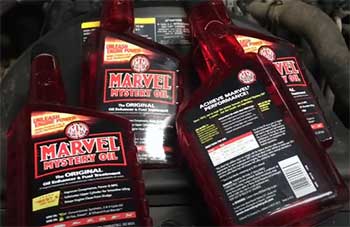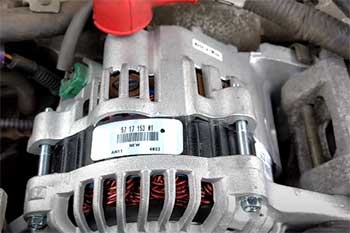I’ve always been a bit of a car enthusiast, tinkering with my vehicle in the garage and obsessing over every detail to keep it running smoothly. When it comes to oil filters, choosing the right one feels like a high-stakes decision—after all, it’s the unsung hero protecting your engine.
In this article, I’ll walk you through my analysis of Wix and MicroGard oil filters, comparing their features, pros, and cons to help you decide which is best for your ride.
From filtration efficiency to durability, I’ve got you covered with a real-world perspective to make your choice easier.
A Brief Comparison Table
| Feature | Wix Oil Filter | MicroGard Oil Filter |
| Manufacturer | Wix Filters (Mann+Hummel) | Purolator (Mann+Hummel) |
| Filter Media | Synthetic or glass-enhanced cellulose | Cellulose or synthetic blend (Select) |
| Anti-Drain Back Valve | Silicone | Nitrile (Standard), Silicone (Select) |
| Micron Rating | 15-20 microns (varies by model) | 15-29 microns (95% efficiency at 29) |
| Oil Change Interval | 3,750–10,000 miles | 3,000–5,000 miles (Standard), up to 10,000 (Select) |
| Driving Conditions | Severe conditions, rough terrain | Normal conditions, city/highway driving |
| Efficiency | 99% at 20-25 microns (XP models) | 95% at 29 microns (Standard) |
| Price Range | $7–$15 | $3–$8 |
| Durability | High (thicker can, robust construction) | Moderate (thinner can, simpler design) |
| Best For | Performance vehicles, extreme conditions | Budget-conscious drivers, daily commuting |
Why Oil Filters Matter To Me (And Should To You)
As someone who’s spent countless weekends under the hood, I’ve learned that an oil filter is more than just a part—it’s the gatekeeper of your engine’s health. It traps dirt, metal particles, and other contaminants, ensuring clean oil circulates to keep your engine humming.
A good filter can extend your engine’s life, while a bad one? Well, let’s just say I’ve seen the aftermath of a clogged filter, and it’s not pretty—sludge buildup, reduced performance, and costly repairs.
That’s why I’m comparing Wix and MicroGard, two brands I’ve used and researched extensively, to help you make an informed choice.
Wix Oil Filters: My Experience and Insights

I first came across Wix filters when I was upgrading my truck for off-road adventures. Wix has been a staple in the automotive world since 1939, and their reputation for quality caught my attention.
Manufactured by Mann+Hummel, Wix offers a range of filters, from standard to high-performance XP models, designed to handle everything from daily commutes to rugged terrains.
Key Features of Wix Oil Filters
Wix filters stand out for their robust construction. The filter media, often synthetic or glass-enhanced cellulose, is thicker and more durable than many competitors. This means it can trap smaller particles—down to 15-20 microns in some models—while maintaining oil flow.
The silicone anti-drain back valve (ADBV) is another feature I appreciate. It prevents oil from draining out when the engine’s off, ensuring immediate lubrication on startup. This is a game-changer for vehicles like mine, which often sit for days between drives.
The Wix XP line, in particular, impressed me with its synthetic media, which boasts 99% efficiency at 25 microns. It’s built for synthetic oils and extended drain intervals, up to 10,000 miles in ideal conditions.
The heavy-duty can and precise pleat spacing also make Wix filters feel like they’re built to last, even in extreme conditions like dusty trails or high-performance driving.
Pros of Wix Oil Filters
- Superior Filtration: The synthetic or glass-enhanced media captures more contaminants, protecting engines in harsh environments.
- Durability: Thicker cans (around 0.018 inches) and sturdy construction resist damage under high pressure or rough conditions.
- Versatility: Compatible with conventional, synthetic, and blended oils, making them suitable for a wide range of vehicles.
- Longer Oil Change Intervals: Up to 10,000 miles for XP models, reducing maintenance frequency.
- Silicone ADBV: Offers better sealing and longevity compared to nitrile, especially in cold starts.
Cons of Wix Oil Filters
- Higher Cost: Priced between $7 and $15, Wix filters are more expensive than budget options, which might deter cost-conscious drivers.
- Overkill for Casual Driving: If you’re just cruising city streets, the premium features might not justify the price.
- Availability: Not always stocked at every auto parts store, especially in smaller towns, which can be a hassle.
I’ve used Wix filters on my truck for over two years, and the peace of mind is worth the extra cost. During a recent oil change, I cut open a used Wix filter and was impressed by the even pleats and minimal debris, a testament to its quality.
But I’ll admit, for my daily driver, I’ve sometimes wondered if I’m paying for more than I need.
MicroGard Oil Filters: A Budget-Friendly Contender
MicroGard filters, sold primarily at O’Reilly Auto Parts, entered my radar when I was looking for a cheaper alternative for my wife’s sedan.
Also produced by Mann+Hummel (via Purolator), MicroGard offers standard and Select models, with the latter designed for synthetic oils. These filters are marketed as reliable, no-frills options for everyday driving, and I’ve used them for short oil change intervals with decent results.
Key Features of MicroGard Oil Filters
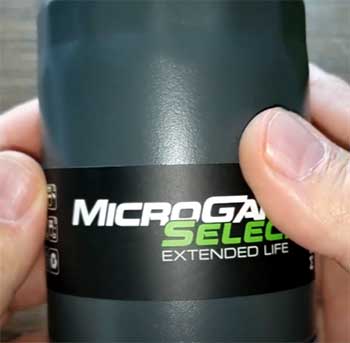
MicroGard’s standard filters use cellulose media, which is less advanced than Wix’s but still effective for daily use.
They claim 95% efficiency at 29 microns, which is solid for the price.
The nitrile ADBV in standard models does the job, though it’s not as durable as silicone.
The Select line, however, steps it up with synthetic-blend media and a silicone ADBV, offering up to 99% efficiency at 25 microns and longer intervals (up to 10,000 miles with synthetic oil).
The construction is simpler, with a thinner can (around 0.015 inches) and glued pleats, but it’s functional for city driving.
I noticed the filter media in a MicroGard Select I used was slightly denser than the standard version, which gave me confidence in its filtration for my wife’s car.
Pros of MicroGard Oil Filters
- Affordability: Priced at $3–$8, they’re a steal for budget-conscious drivers like me when I’m maintaining multiple vehicles.
- Decent Performance: Standard models handle 3,000–5,000-mile intervals well for conventional oil, while Select models support longer intervals.
- Availability: Widely available at O’Reilly Auto Parts, making them convenient for quick purchases.
- Adequate for Normal Conditions: Perfect for city or highway driving, where extreme conditions aren’t a concern.
- Select Line Improvements: The synthetic-blend media and silicone ADBV in Select models rival premium filters at a lower cost.
Cons of MicroGard Oil Filters
- Basic Construction: Thinner cans and nitrile ADBVs in standard models are less durable, especially under high pressure.
- Shorter Intervals for Standard Models: Limited to 3,000–5,000 miles, requiring more frequent changes.
- Mixed Reliability: I’ve read user reports of leaks or defects, like a faulty O-ring seal, which made me double-check my installation.
- Not Ideal for Extreme Conditions: Cellulose media struggles in dusty or high-performance environments, where Wix excels.
My experience with MicroGard has been mostly positive, especially for my wife’s low-mileage commuter car. However, I once had a standard MicroGard filter leak slightly during installation, likely due to a misaligned gasket.
It was a one-off, but it made me cautious. Cutting open a used MicroGard showed decent filtration, though the media felt flimsier compared to Wix.
Also Read: Comparison of WIX And NAPA Gold Oil Filters.
Head-to-Head Comparison of Wix And MicroGard Oil Filters
Let’s get into the meat of the comparison. I’ve used both filters in different vehicles, and while they share some similarities (both are made by Mann+Hummel subsidiaries), their differences are what set them apart.
Here’s how they stack up across key factors.
- Filtration Efficiency
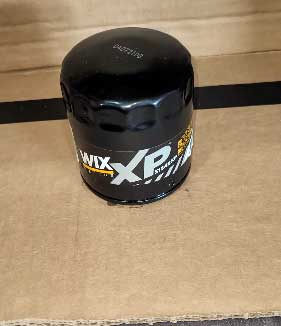
Wix filters, especially the XP line, are the clear winners here.
Their synthetic or glass-enhanced media achieves 99% efficiency at 20-25 microns, meaning they trap smaller particles more effectively.
I noticed this when I used a Wix XP on my truck during a dusty off-road trip—the oil stayed cleaner longer compared to a MicroGard I’d used previously.
MicroGard’s standard filters, with cellulose media, hit 95% efficiency at 29 microns, which is fine for daily driving but lags in tougher conditions.
The Select line narrows the gap, but it’s still not quite on par with Wix.
- Durability and Build Quality
Wix filters feel like they’re built for battle. The thicker can, metal crimped pleats, and silicone ADBV give them an edge in high-pressure or extreme environments. I’ve never had a Wix filter fail, even during long hauls in my truck.
MicroGard’s standard filters, with thinner cans and glued pleats, are more prone to damage under stress. The Select line improves on this, but I still wouldn’t trust it for heavy-duty use.
When I compared a used Wix and MicroGard side by side, the Wix’s media held its shape better, while the MicroGard’s showed slight tearing.
- Oil Change Intervals
For someone like me who hates frequent maintenance, Wix’s longer intervals (up to 10,000 miles for XP models) are a big plus. This suits my truck, which I drive hard and far. MicroGard’s standard filters max out at 5,000 miles, which is fine for my wife’s sedan but means more frequent changes.
The Select line can hit 10,000 miles with synthetic oil, but I’ve stuck to shorter intervals to be safe, given the mixed reviews on durability.
- Driving Conditions
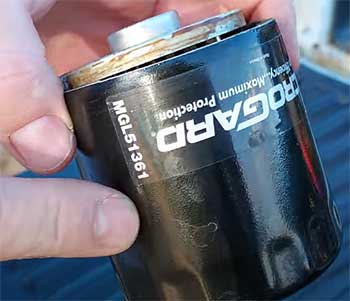
Your driving habits matter.
Wix filters are my go-to for off-roading or extreme weather—think dusty trails or freezing winters.
Their robust design handles these conditions without breaking a sweat.
MicroGard, especially the standard line, is better suited for city or highway driving.
I used a MicroGard on my wife’s car for a year of urban commutes, and it performed well, but I wouldn’t trust it on a rugged adventure.
- Price and Value
Here’s where MicroGard shines. At $3–$8, it’s a budget-friendly option that doesn’t skimp on basic performance. For my wife’s car, which racks up maybe 6,000 miles a year, MicroGard is a cost-effective choice.
Wix, at $7–$15, feels like a premium investment. If you’re driving a performance vehicle or in harsh conditions, the extra cost is justified. But for a daily commuter? I’ve sometimes leaned toward MicroGard to save a few bucks.
- Anti-Drain Back Valve
The ADBV is critical for preventing dry starts, which can wear out your engine over time. Wix’s silicone ADBV is more durable and seals better, especially in cold weather. MicroGard’s nitrile ADBV in standard models is functional but less reliable long-term.
The Select line’s silicone ADBV is a step up, but I’ve still noticed Wix feels more consistent. During a cold winter morning, my truck with a Wix filter started smoothly, while a MicroGard-equipped car took a second longer to pressurize.
Real-World Testing: My Garage Experiments
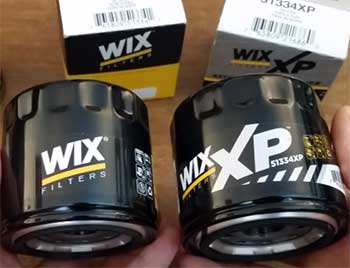
To get a better feel for these filters, I did some hands-on comparisons.
I cut open used Wix and MicroGard filters after 4,000 miles of use in similar conditions (mixed city and highway driving).
The Wix filter’s media was intact, with deep pleats holding a surprising amount of dirt without clogging.
The MicroGard’s media, while effective, showed some wear, and the pleats weren’t as uniform.
I also tested installation ease—Wix’s wider opening made oil filling simpler, while MicroGard’s design felt a bit clunkier.
I spoke to a mechanic friend who’s worked on hundreds of engines. He prefers Wix for high-performance vehicles but uses MicroGard for customers on a budget. His take? “Wix is overkill for a grocery-getter, but you can’t beat it for tough jobs.”
That aligns with my experience—Wix is my choice for my truck, while MicroGard suits my wife’s sedan.
User Feedback and Community Insights
I scoured forums like BobIsTheOilGuy and Reddit to see what other drivers think. Wix consistently gets praise for its filtration and durability, with many users swearing by the XP line for synthetic oils.
MicroGard has a mixed reputation—some love the value, while others report leaks or premature wear. One user on Toyota Nation shared a horror story about a MicroGard leaking oil all over their driveway, which echoed my own cautionary tale.
However, others on CorvetteForum noted that MicroGard air filters were nearly identical to Wix but cheaper, suggesting the gap isn’t always huge.
Making the Choice: Wix or MicroGard?
Choosing between Wix and MicroGard boils down to your needs and budget. If you’re like me, with a vehicle that faces tough conditions or high mileage, Wix is the safer bet. Its superior filtration, durability, and longer intervals make it worth the extra cost.
But if you’re driving a commuter car in normal conditions, MicroGard—especially the Select line—offers solid performance for less. I’ve used both and haven’t had major issues, but Wix gives me more confidence for demanding drives.
Also Read: Comparison of Baldwin And WIX Oil Filters.
Frequently Asked Questions (FAQ)
It depends on your needs. Wix is top-tier for performance and extreme conditions, while MicroGard is great for budget-friendly, everyday driving.
MicroGard filters are made by Purolator, a subsidiary of Mann+Hummel, often in Mexico, Vietnam, or Korea.
Wix filters are manufactured by Wix Filters, also under Mann+Hummel, typically in the USA or China.
Standard MicroGard filters last 3,000–5,000 miles; Select models can last up to 10,000 miles with synthetic oil.
Conclusion: Your Engine, Your Choice
You’ve got a decision to make, and I hope my journey through Wix and MicroGard oil filters has given you clarity. If you’re chasing top-notch performance and durability, Wix is your go-to—it’s been my trusty companion on rugged adventures.
But if you’re pinching pennies and sticking to city streets, MicroGard won’t let you down. Weigh your driving habits, budget, and vehicle needs, and you’ll find the right filter to keep your engine purring.
Happy driving, and may your oil always stay clean!
